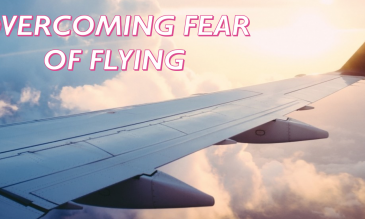- Back in 1932, Linious “Mac” McGee painted “McGee Airways” on the side of a three-passenger Stinson and started flying out of Anchorage.
- Two years later, McGee Airways merged with Star Air Service, resulting the largest airline in Alaska, with a fleet of 22 aircraft.
- In 1944, Star Air Lines bought three small Alaskan carriers, changed its name to Alaska Star Airlines, and finally became Alaska Airlines.
- In the late 1940s, Alaska Airlines became largest charter operator in the world, carrying food in the Berlin Airlift and refugees to the settlement of Israel.
- In 1950, two more small Alaskan carriers were purchased by Alaska Airlines.
- In late 1950s, the airline introduced in-flight movies for the first time.
- During the 60s, Alaska Airlines started flying jets, also being the first commercial carrier to fly the Lockheed Hercules for hauling cargo.
- Boeing 727s joined the fleet in mid-1960s.
- In 1968, Alaska Airlines merged with two long-time Southeast airlines, Alaska Coastal-Ellis and Cordova.
- After going through a lot of problems in the early 1970s, the Airline reached 1979 serving 10 cities in Alaska and Seattle with a fleet of only 10 aircraft.
- By 1985, Alaska Airlines continued to grow, and during that year, Alaska Air Group was formed as a holding company, acquiring Horizon Air and Jet America Airlines one year later.
- Horizon Air was founded in Seattle in September, 1981, growing rapidly by acquiring Air Oregon in 1982, and Transwestern Airlines, one year later.
- In 1984, Horizon Air became a public company, and Alaska Air Group, Inc., acquired it two years later.
- Today, Horizon is about 4,000 employees strong and serves more than 45 cities in Arizona, California, Colorado, Idaho, Montana, Nevada, Oregon, Washington, British Columbia, and Alberta.
- In the meantime, Alaska Airlines continued to grow, currently having over 13,500 employees and serving routes to Boston, Chicago, Dalls, as well as Mexico and the Hawaiian Islands, but not limited to these.
- In 1995, Alaska was the first airline in North America to sell tickets on the Internet.
- In November 1999, Alaska Airlines was the first in the world to offer online check-in to the general public, allowing passengers to check in and print boarding passes via the Internet.
- In October, 2003, Alaska Airlines introduced the first portable, hard-drive based, audio-video-on-demand (AVOD) players that deliver a variety of film, TV, and audio programs, the digEplayer.
- In February 2007, Alaska Airlines introduced its first two Boeing 737–400 Combis to their fleet in order to replace their aging Boeing 737–200 Combi aircraft.
- In 2008, Alaska Airlines completed its transition to an all-Boeing 737 aircraft fleet with the retirement of its last MD-80 series airplane.
- In January 2011, Alaska Airlines placed an order for two 737-800s and thirteen 737-900ERs, scheduled for delivery between 2012 and 2014. The first 737-900ER was added to the fleet in November 2012.
- In November 2011, Alaska Airlines flew 75 commercial passenger flights between Seattle and Washington, D.C., and Portland, Oregon, powered by biofuel using a 20 percent blend of sustainable biofuel made from used cooking oil that meets rigorous international safety and sustainability standards.
- In October 2012, Alaska placed the largest order in its history, a total of 50 Boeing 737s that consists of 20 Boeing 737 MAX 8s, 17 Boeing 737 MAX 9s and 13 Boeing Next-Generation 737-900ERs. The order is scheduled for delivery between 2015 and 2022.
- Alaska Airlines is the 7th-largest U.S. airline based on passenger traffic and the dominant U.S. West Coast air carrier. Together with its partner regional airlines, Alaska serves 95 cities through an expansive network (Alaska, the Lower 48, Hawaii, Canada and Mexico), with an average of 800 daily departures.
-
In October 2014, Alaska Airlines ordered other ten B737-900ER aircraft that will be used to replace the Boeing 737-400s scheduled for retirement by the end of 2017.
-
In January 2016, for the first time in 25 years, Alaska Airlines updated its brand with a new logo changed to a different font style and a new livery, which modernized Alaska’s icon since 1972, the Eskimo, by adding new vibrant colors, Tropical Green and Breeze Blue, around his parka trim.
- In April 2016, Alaska Air Group, the parent company of Seattle-based Alaska Air, announced the acquisition Virgin America, its San Francisco-based smaller rival. The acquisition was completed by the end of the year, the U.S. Justice Department approval being the last remaining major step in the $2.6 billion deal after Virgin America shareholders approved the merger in July.
- Early 2017, Alaska Airlines introduced Premium Economy Class, offering customers more legroom (3-4 additional inches compared with a standard coach seat) and other perks such as priority boarding.
- In April 2018, Virgin America was fully merged into Alaska Airlines, and the Virgin America brand is expected to be fully retired in 2019.
- In March 2019, Alaska Airlines started operating flights from the new commercial air terminal at Paine Field-Snohomish County Airport in Everett, providing more convenient flight options for those who live north of Seattle. From Paine Field, Alaska Airlines offers flights to eight West Coast cities operated by Horizon Air with Embraer 175 aircraft.
- In 2019, Alaska’s Airbus fleet was updated with a new and modern cabin that will align the onboard experience across the entire fleet. The result of two years of customer research, the upgraded cabin combines the best features of Alaska Airlines and Virgin America. Alaska’s new cabin features include a refreshed color palette, ambient mood lighting, redesigned first class Recaro seats, upgraded premium and main cabin seats with memory foam, power outlets at every seat (USB & 110V), advanced high-speed satellite Wi-Fi by Gogo, ergonomically-friendly tablet holders at each seat, cup holders.
- In 2020, Alaska Air Group struggled to cope with the air travel downturn caused by the COVID-19 pandemic. The airline implemented over 100 changes, such as mandatory mask-wearing and giving Yellow Cards (customers that don’t wear a mask are invited not to fly on Alaska Airlines until after COVID), cutting back on food and beverage service, so there would be less touching, cleaning aircraft with three different cleans, including electrostatic and chemicals. With more than half of the 330 planes grounded, traffic reaching 3.5% of normal in April 2020, refunding more tickets than selling, Alaska Air Group reported a $1.3 billion annual loss for 2020.
- In March 2021, Alaska Airlines officially joined oneworld, becoming the 14th full member of the global alliance. Also, the airline’s first Boeing B737 MAX 9, delivered in January, entered into service. Alaska ordered a total of 81 Boeing B737 MAX 9s that will replace Alaska Airlines’ Airbus A320 fleet.
- In May 2021, with recovery on the horizon and expecting domestic travel to return to pre-COVID levels by summer 2022, Alaska Airlines announced plans for route expansion and fleet growth. As more travelers search for leisure getaways, Alaska announced a new nonstop service from the West Coast to Belize City, Belize, the second Central American country Alaska flies to. Taking advantage of strategic opportunities, Alaska Airlines ordered 30 aircraft to fulfill capacity needs after recovery: 17 new Embraer 175 jets to be added to the regional fleet in 2022 and 2023 and 13 Boeing 737 MAX 9 with delivery in 2023 and 2024.
- Finally, it should be noted that first fatal incident took place in November, 1947, when a Douglas DC-4 operated by Alaska Airlines crash landed in Seattle, causing 9 fatalities, and the last such incident happened in January, 2000, when an MD-83 aircraft – Alaska Airlines Flight 261, plunged into the Pacific Ocean while preparing for an emergency landing, killing all 88 people on board. No fatal accidents involving Horizon Air have ever been recorded.

 En
En Es
Es Fr
Fr







